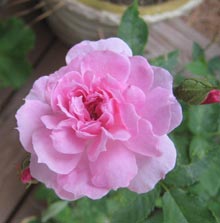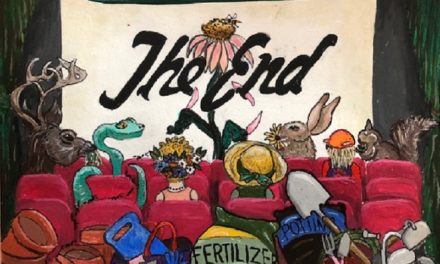 Most of y’all are probably too young to remember the comedian Red Skelton’s persona of the ‘mean widdle kid,’ who pondered, “If I dood it, I get a whippin’ . . . I dood it!”
Most of y’all are probably too young to remember the comedian Red Skelton’s persona of the ‘mean widdle kid,’ who pondered, “If I dood it, I get a whippin’ . . . I dood it!”
Well, I’m dooding it, too. As a result of this column, I’ll probably be in line for verbal whippins’ from a lot of folks, so let me say right off the bat: I AM NOT AGAINST NATIVE PLANTS!! I agree that we need to preserve a native presence in our landscapes, but not to the exclusion of the wealth of other valuable non-natives we have come to know and love.
An earlier buzz word was ‘sustainability.’ Now it’s ‘native.’ This column isn’t about native plant bashing. It’s that I disagree strongly with the notion that implies only native plants provide adequate sustenance for wildlife and insects, and that only native plants are really environmentally sound. It’s almost inevitable in articles about native plants, that non-natives (aliens) are portrayed as a lurking invasive peril. The truth is that few aliens planted in gardens are responsible for displacing native plants in the wild.
Native plants (those that were here when the first European settlers arrived) lived in a very different ecosystem than we have now. Even the soil is different; construction, tilling, compacting, dredging, pollution, fertilizers and construction debris (especially around homes) have affected the quality and components of the soil where we make our gardens. A backyard doesn’t mimic the conditions of the vast prairies and forests that greeted the settlers.
For decades, we have been instructed to follow the ‘Right Plant-Right Place’ mantra, but we‘ve completely ignored this dictum when it comes to native plants. We should face the fact that native plants are not native to the average backyard. Sure, some of them will grow and thrive there, but they may not be the plants we want in our gardens. As garden writer Ed Koch says, “Never base a plant palette on what was native 200 years ago; base it on what the conditions are currently.”
Yes, it’s true that some native plants are more successful at sustaining animal and insect life than their alien counterparts, but that doesn’t mean that non-natives are barren and beauty is their only purpose. They, too, provide wildlife habitat, need pollinating and go to seed. Aliens that grow here do so because our climate mimics theirs. The busiest plants in my garden are African Blue Basil and Mexican Sunflower (see above).
Only a few creatures have just one plant species as food; butterfly caterpillars (milkweed), pandas (bamboo) and koalas (eucalyptus) for example, but as long as the species is correct, the plant itself need not be a native. And even though I do have bamboo and eucalyptus in my garden, they haven’t attracted any pandas or koalas. Yet.
I give almost half of my property to nature. There are probably some non-natives there, but wax myrtles especially, and water oaks, sweetgum, palmettos and pine trees have pretty much taken over that area, allowing only those pesky, aggressive vines like smilax, Virginia creeper, briar and grape to co-exist. Native plants can’t legally be classified as invasive, but some are thugs and if I allowed it, they would take over my entire property. However, it’s a good wildlife habitat so I leave it, even though the only color it offers seems to be green. The rest of my property is made of several garden beds, foundation shrubs, and trees. Turf, too, which I admit is a huge waste of resources; but that’s another column.
For plants to earn space in my gardens, they must have color, texture, or fragrance, and encourage birds, butterflies and bees. Surely no one can disagree that there are more varieties of non-natives that fit those criteria than there are natives. After all, you have the whole world to choose from. I am an admitted plant nut so natives and aliens play happily together in my gardens.
I see articles that propose that there is a native alternative for every landscape option so there is no reason to plant aliens. However, the alternate options for the many, many non-natives available, seem to be for the same few natives. Refer to the Carolina Yards Plant Database. https://www.clemson.edu/extension/carolinayards/plant-database/index.html
Looking there for a selection of foundation shrubs which are native, evergreen and with a maximum mature height under 6 to 8 feet (to avoid continual pruning), I found just one; Ilex glabra(Inkberry) – unless you consider palms and perennials to be foundation shrubs. Evidently they do, since they list plants such as Salvia coccinea, foam flower and false Solomon’s seal as evergreen native shrubs.
The South Carolina Wildlife Foundation’s list adds only one more; Leucothoe axillaris. http://www.scwf.org/native-plant-list?rq=native%0plant%20list
According to those lists, there just aren’t enough native plants to fill landscape needs. And how are you supposed to know what isnative?? I tried looking on the website of the South Carolina Native Plant Society but there is no list of common native plants. Curious. https://scnps.org/
But look at the number of non-native selections that fit that criteria.There are Gardenias, dwarf cultivars of Podocarpus, Pittosporum, Loropetalum, boxwood and hollies. Pieris japonica, Abelia, Barberries, Fatsia, Dichroa, Serissa and even some Camellias. Not a single one is invasive.
Oddly, growers don’t seem to be very interested in cultivating dwarf versions of native plants. They should be; there is a need.
Introduced species have contributed greatly to the economy and beauty of our country. Our nation would be poorer indeed without the influx of non-native plant and animal life. Most of our animal protein; beef, pork, lamb, and chicken are notnative to the United States. The vast majority of fruits and vegetables found in supermarkets today may grow here now, but they didn’t originate here. The only native vegetables in cultivation were corn, squash and beans. American as apple pie? Nuh-uh. Asian. And while French Fries aren’t native to France, they’re not native here either. Most commonly used herbs and spices are non-native. And where would we be without our morning orange juice, toast (wheat) and coffee? Or the white wine of the south, iced tea? More non-natives.
Do you see where I’m going? If limiting our palette to natives applied to people, most of us wouldn’t even be here today. Go back only a few generations, and other than Native Americans, we’d all be aliens.
Hello, Ork? Nanu-Nanu.







